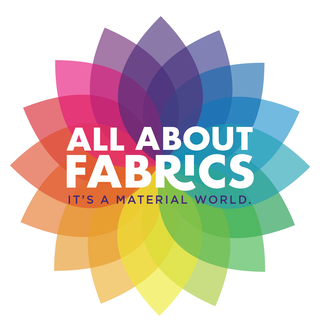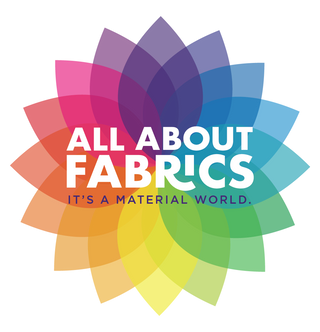Denim, a fabric synonymous with durability and style, has come a long way since its humble beginnings. From its origins as robust workwear to its evolution into a global fashion staple, denim has woven itself into the fabric of our lives. In this blog, we'll explore the rich history of denim, delve into how it is made, and examine the various types of denim fabrics available today.
The Origins of Denim
Early Beginnings
The story of denim begins in the late 17th century in Nîmes, France. The term "denim" is derived from "serge de Nîmes," which translates to "serge from Nîmes." Serge is a type of sturdy fabric, and the version produced in Nîmes was known for its durability. However, it was in the bustling port city of Genoa, Italy, that a similar fabric was first used extensively, particularly by sailors. This fabric, called "jean," was made from a blend of cotton and wool or linen and was noted for its strength.
Denim in America
Denim fabric made its way to America in the late 18th century, but it wasn't until the mid-19th century that it became widely recognized. During the California Gold Rush of the 1850s, miners needed durable clothing that could withstand the harsh conditions of their work. Enter Levi Strauss, a Bavarian immigrant, who teamed up with tailor Jacob Davis to create sturdy work pants reinforced with metal rivets at stress points. This innovation gave birth to the first pair of blue jeans in 1873, marking a significant milestone in the history of denim.
How Denim Is Made
The Raw Materials
Denim is primarily made from cotton, a natural fiber known for its comfort and breathability. The production of denim fabric begins with the harvesting of cotton bolls, which are then cleaned, carded, and spun into yarn.
The Weaving Process
Denim's characteristic strength and texture come from its unique weaving process. The fabric is woven using a twill weave, which creates diagonal ribbing. This weave pattern involves passing the weft (horizontal) threads under two or more warp (vertical) threads. This not only enhances the fabric's durability but also gives denim its distinctive look.
Indigo Dyeing
One of the most iconic features of denim is its blue color, achieved through indigo dyeing. Traditionally, indigo dye was derived from the indigo plant, but today, most denim is dyed using synthetic indigo. The yarn is repeatedly dipped in indigo dye baths to build up the deep blue hue. After dyeing, the yarn is woven into fabric, which is then sanforized (pre-shrunk) to minimize future shrinkage.
The Evolution of Denim in Fashion
Early Workwear
In its early days, denim was primarily used for workwear due to its durability. The first denim garments were utilitarian in design, featuring simple cuts and reinforced seams. Miners, cowboys, and railroad workers favored denim for its toughness and ability to withstand rough conditions.
The Rise of Jeans
The 1950s marked a turning point for denim as it transitioned from workwear to everyday fashion. This shift was largely influenced by Hollywood and the rise of youth culture. Icons like James Dean and Marlon Brando popularized jeans through their rebellious on-screen personas, making denim synonymous with cool and edgy style.
Denim in the 1960s and 1970s
The counterculture movements of the 1960s and 1970s further propelled denim into the fashion spotlight. Hippies and activists adopted jeans as a symbol of non-conformity and solidarity. During this period, denim also began to diversify in terms of styles and washes. Bell-bottoms, flared jeans, and embellished denim jackets became popular, reflecting the era's experimental and free-spirited ethos.
Designer Denim
The 1980s saw the emergence of designer denim, elevating jeans to a luxury item. Brands like Calvin Klein, Jordache, and Guess introduced high-end denim lines, often featuring designer logos and unique fits. The focus shifted to the fit, finish, and branding, with jeans becoming a staple in fashion-forward wardrobes.
Modern Denim Trends
In the 21st century, denim remains a cornerstone of fashion, continually evolving with trends and technological advancements. Today, there is a wide array of denim styles and treatments available, catering to diverse tastes and preferences. Skinny jeans, boyfriend jeans, distressed denim, and high-waisted styles are just a few examples of the variety in modern denim fashion.
Types of Denim Fabrics
Raw Denim
Raw denim, also known as dry or unwashed denim, is fabric that has not undergone any washing or distressing treatments after being dyed. It has a stiff texture and deep indigo color, which fades and softens with wear, creating a unique, personalized look over time.
Selvedge Denim
Selvedge (or selvage) denim is woven on traditional shuttle looms, resulting in a tightly finished edge that prevents fraying. Selvedge denim is often considered a premium fabric due to its high quality and the meticulous production process. It is easily identified by the colored thread running along the edge of the fabric.
Stretch Denim
To enhance comfort and fit, stretch denim incorporates a small percentage of elastic fibers, such as spandex or elastane, into the cotton weave. This gives the fabric flexibility and allows it to retain its shape, making it popular for skinny jeans and fitted styles.
Acid-Wash and Stone-Wash Denim
Denim can undergo various treatments to achieve different looks. Acid-wash denim, popular in the 1980s, involves treating the fabric with chlorine or pumice stones to create a mottled, faded appearance. Stone-wash denim is achieved by washing the fabric with pumice stones, which softens the material and gives it a worn-in look.
Recycled Denim
In response to growing environmental concerns, many brands are now producing recycled denim. This eco-friendly option involves reusing old denim garments and fabric scraps to create new denim products. Recycled denim reduces waste and conserves resources, aligning with sustainable fashion practices.
The Future of Denim
As we look to the future, denim continues to innovate and adapt to changing consumer demands. Sustainability is a key focus, with many brands striving to reduce the environmental impact of denim production. Advances in textile technology are also paving the way for new fabric blends and finishes, offering enhanced performance and comfort.
Sustainable Denim Practices
Sustainable denim production involves various practices, such as using organic cotton, reducing water and energy consumption, and employing eco-friendly dyes and finishes. Brands are also exploring alternative materials, like hemp and recycled fibers, to create sustainable denim options.
Technological Innovations
Technological advancements are revolutionizing denim manufacturing. For example, laser technology can create intricate patterns and finishes without the need for harmful chemicals. Additionally, innovations in dyeing processes aim to minimize water usage and reduce pollution.
From its origins as rugged workwear to its status as a global fashion icon, denim has undergone a remarkable evolution. This versatile fabric has adapted to changing trends and technologies while maintaining its core attributes of durability and style. Whether you prefer classic blue jeans or contemporary denim creations, the story of denim is a testament to its enduring appeal and versatility in the world of fashion. As we move forward, the commitment to sustainability and innovation ensures that denim will continue to be a beloved fabric for generations to come.


